Intimidated by roasting a whole duck? Don’t be.
It takes a few hours, but it’s really pretty easy. You just need to know what to do with your bird. It’s kind of a labor of love, but it’s definitely worth it.
With this method, the skin is crispy. The meat is succulent, perfectly cooked, and not at all greasy. And best of all? You’ll wind up with about a cup-and-a-half of duck fat. (More on this in a sec.)
This article demonstrates a step-by-step master recipe for roasting a plain duck, and then shows you how to lacquer it with a mouthwateringly spicy molasses and soy glaze. It’s a take off on Martha Stewart’s recipe & method from her Cooking School book.
So you guys know I have a fair obsession with duck fat
Now, I’ve roasted my share of ducks, but I’m always looking for ways to improve two things (which luckily, are tied together): how crisp the skin is and how much duck fat I get. The method below gets a lot of fat out of the duck, and produces beautiful, crackly skin.
Wait, Mouse. What can I cook with all that duck fat?
Duck fat keeps for months in the fridge. Use it much in the same way you would use rendered bacon fat. Here are some ideas:
+Duck fat is a glorious companion to potatoes. Make some duck-fat hash browns. Add duck fat to mashed potatoes instead of butter.
+Rub a whole chicken’s skin with it before roasting. It’ll add a good, deep flavor to your bird. (A chicken in duck’s clothing? I’ll take it!)
+Slather it on root veggies and roast with garlic, salt, and pepper.
+Rub a whole chicken’s skin with it before roasting. It’ll add a good, deep flavor to your bird. (A chicken in duck’s clothing? I’ll take it!)
+Slather it on root veggies and roast with garlic, salt, and pepper.
On to the duck!
I don’t buy duck very often. They don’t usually carry it at my regular grocery store, so I make a special trek toWhole Foods for it. That’s just fine. It’s a treat, after all.
How to roast a duck: The basic technique
Here’s the basic technique I use to roast a duck. Roast it as follows for 4 hours at 300 degrees. After 4 hours, glaze and blast it at high heat for a short time.
- Score the skin, cut off excess fat, and poke it all over
- Salt and truss
- Roast at 300 degrees for 1 hour, breast-side up
- Poke, flip, roast for 1 hour, breast-side down
- Poke, flip, roast for 1 hour, breast-side up
- Poke, flip, roast for 1 hour, breast side down
- Poke, flip, blast at 400 degrees for 10 minutes, breast-side up
- Brush with glaze
- Finish at 400 degrees for 5-7 minutes
- Rest, carve & serve
If you’re a meat thermometer kind of person, you want your duck to register 165 degrees F. If you follow the instructions below, you should be just fine.
Read on for step-by-step photo instructions.
Master Recipe: Roast Duck
1 whole Pekin duck, 5-6 lbs.
kosher salt
kosher salt
Sweet & Spicy Glaze
1/4 cup honey
1/4 molasses
3 Tbls. orange juice
1 Tbls. soy sauce
1 1/2 Tbls. Sriracha chili sauce (adjust to taste)
1/4 molasses
3 Tbls. orange juice
1 Tbls. soy sauce
1 1/2 Tbls. Sriracha chili sauce (adjust to taste)
How to roast a duck: Unwrap the bird & deal with the innards
Grab your duck and unwrap it.
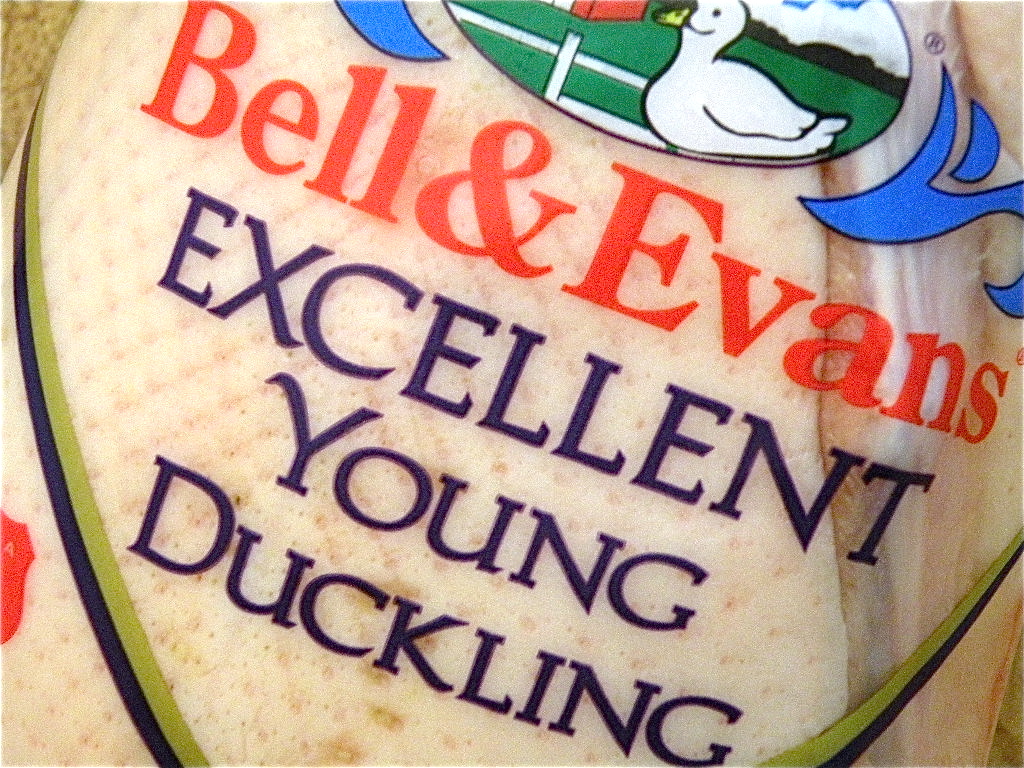
Yank out all the little treats that are inside the duck’s cavity and set them aside. Sometimes they’ll be wrapped in paper. Sometimes they’ll be loose. If they’re loose, be sure to get them all out.
I freeze all the innards except the liver, and toss them into stock. (The liver is the brown-ish, squishy looking thing in the upper left part of the picture below.)
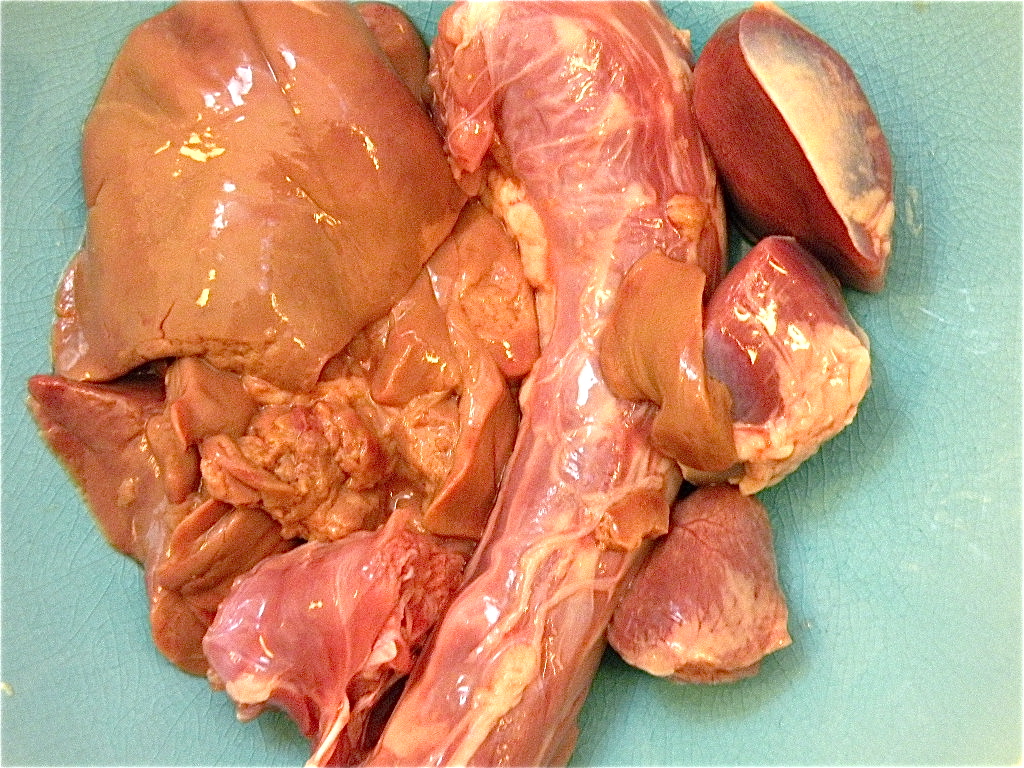
Sidebar: What to do with the duck liver
By all means, save the liver and use it in pate or some other yummy thing.
For a simple and rustic cook’s treat, fry the duck liver in a little butter, garlic, salt, and pepper. Mash it up, then spread it on buttered toast. It makes a lovely snack if you like that kind of thing.
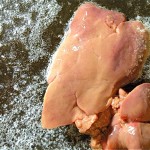
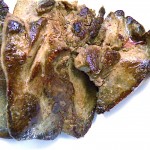
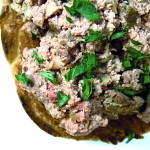
How to roast a duck: Score the skin
Preheat your oven to 300 degrees.
When your duck is empty, rinse it under cold water. Pat it dry with paper towels. Set a rack in a deep-ish roasting pan. Put the duck on the rack. (Or, score the skin, then set it on the rack afterward. Up to you.) Sprinkle the cavity with a little kosher salt.
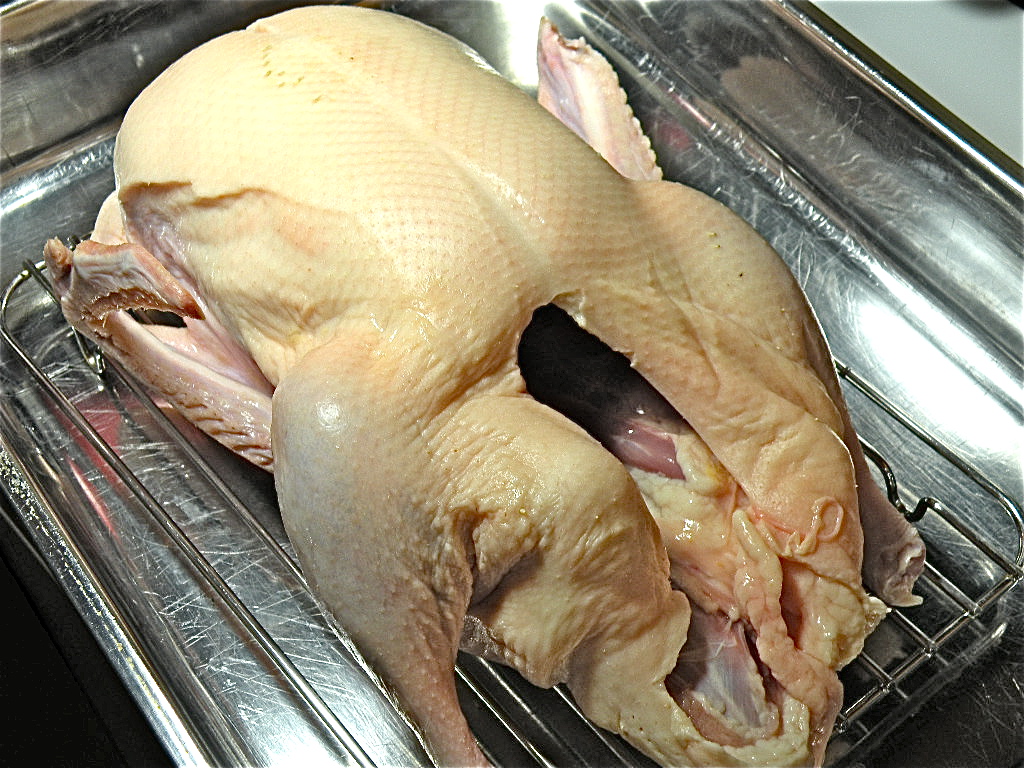
With a very sharp knife, score a diamond pattern into the duck skin on the breast. Slice carefully. You want to cut through most of the fat without cutting into the meat. Luckily, a duck’s layer of fat is fairly thick, so this is pretty easy once you get the hang of it.
Cut on an angle.
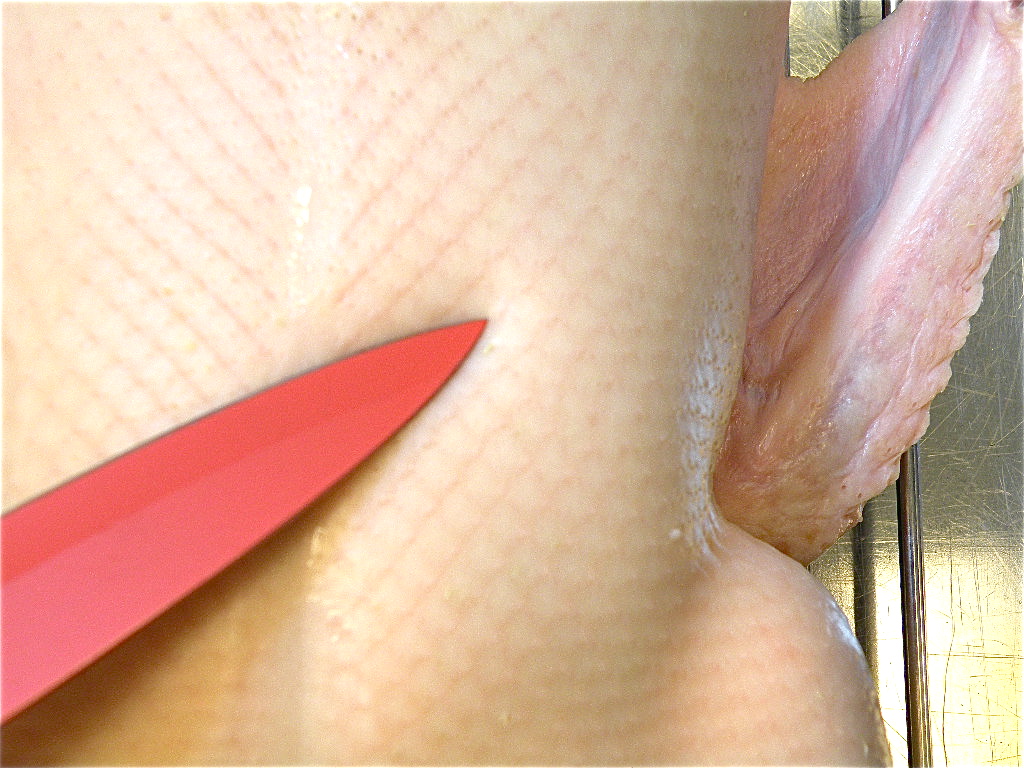
Slice through the skin and fat, but not into the meat.
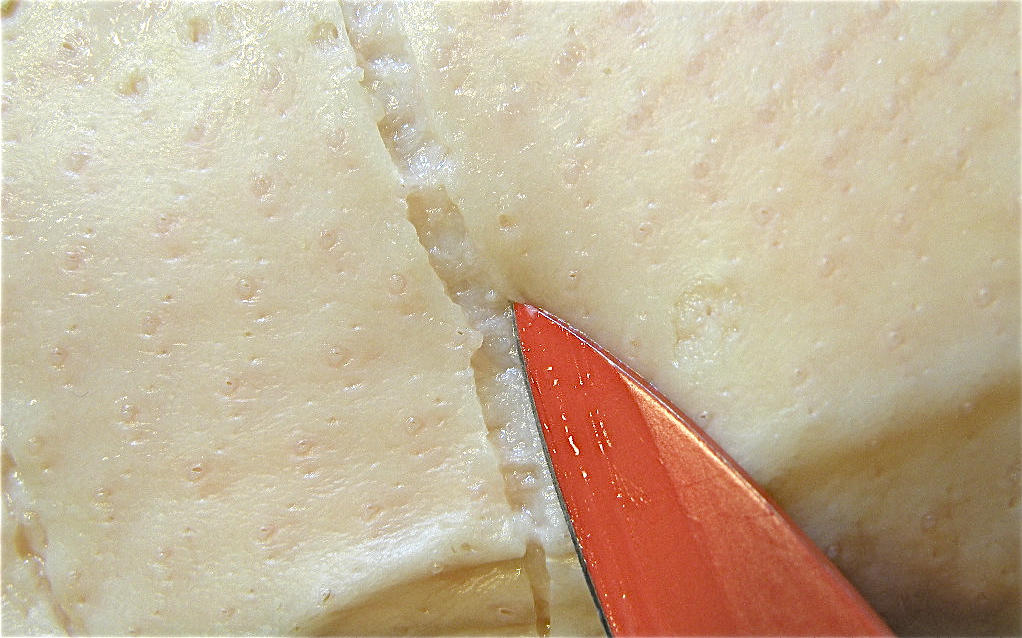
You want your duck to look about like this:
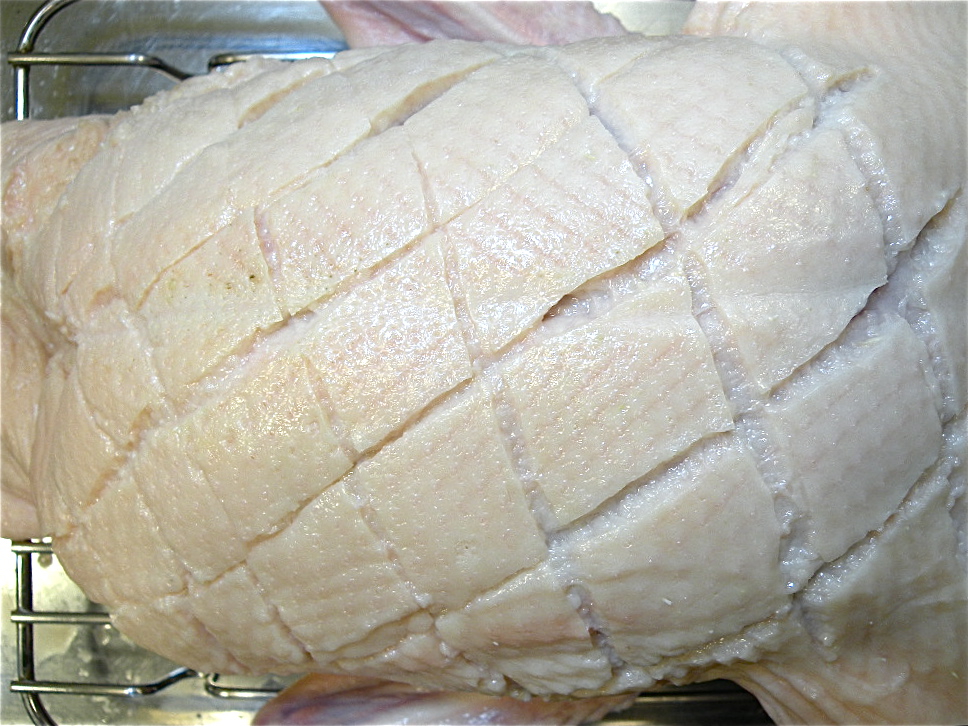
How to roast a duck: Yank out any quills
Your duck might not have any quills. But if you do see any little pointy things poking out of the duck’s skin like this, just pull them out:
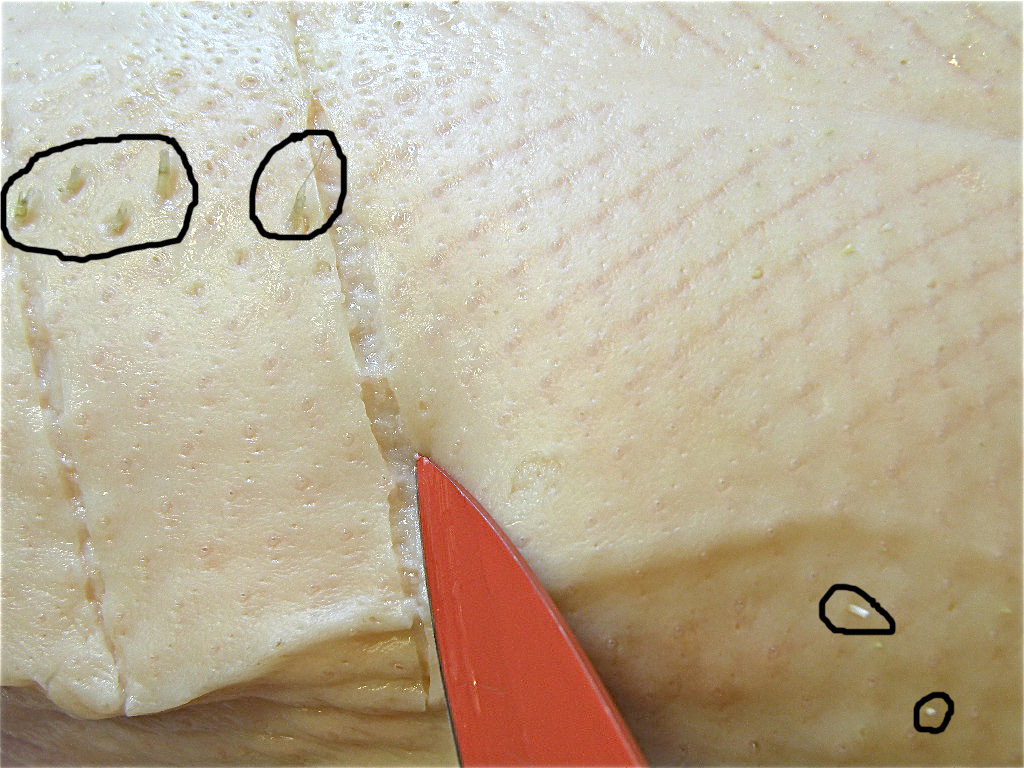
How to roast a duck: Trim off any excess skin (and render it, if you like)
Cut off any excess skin at either end of the duck’s cavity.
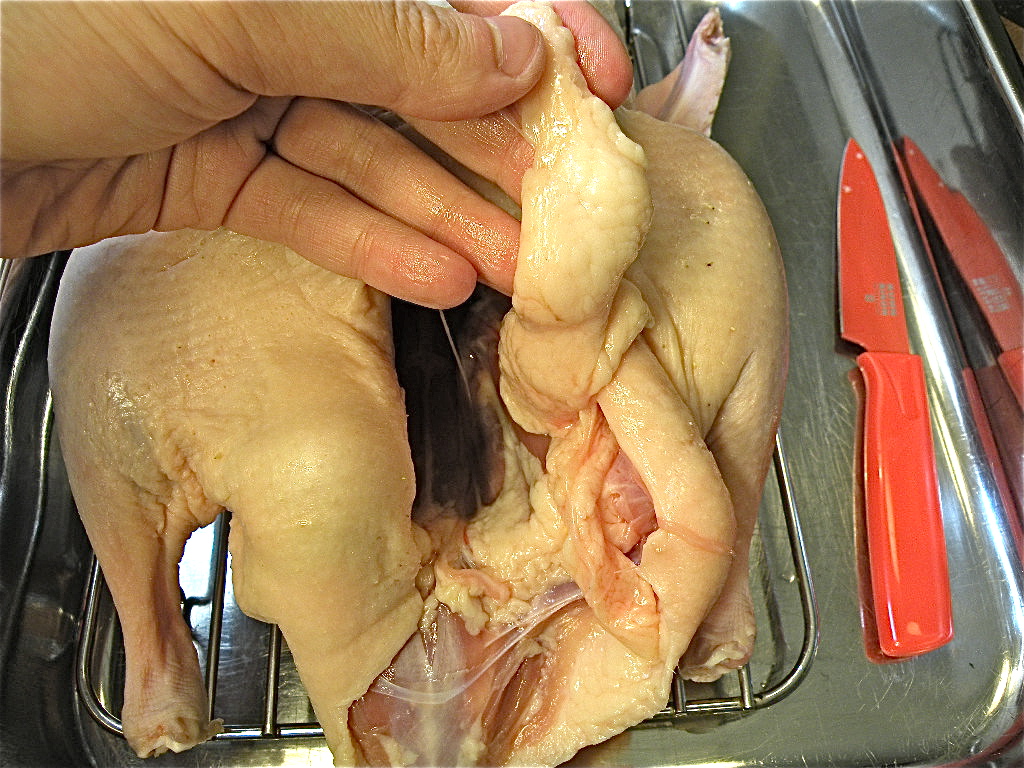
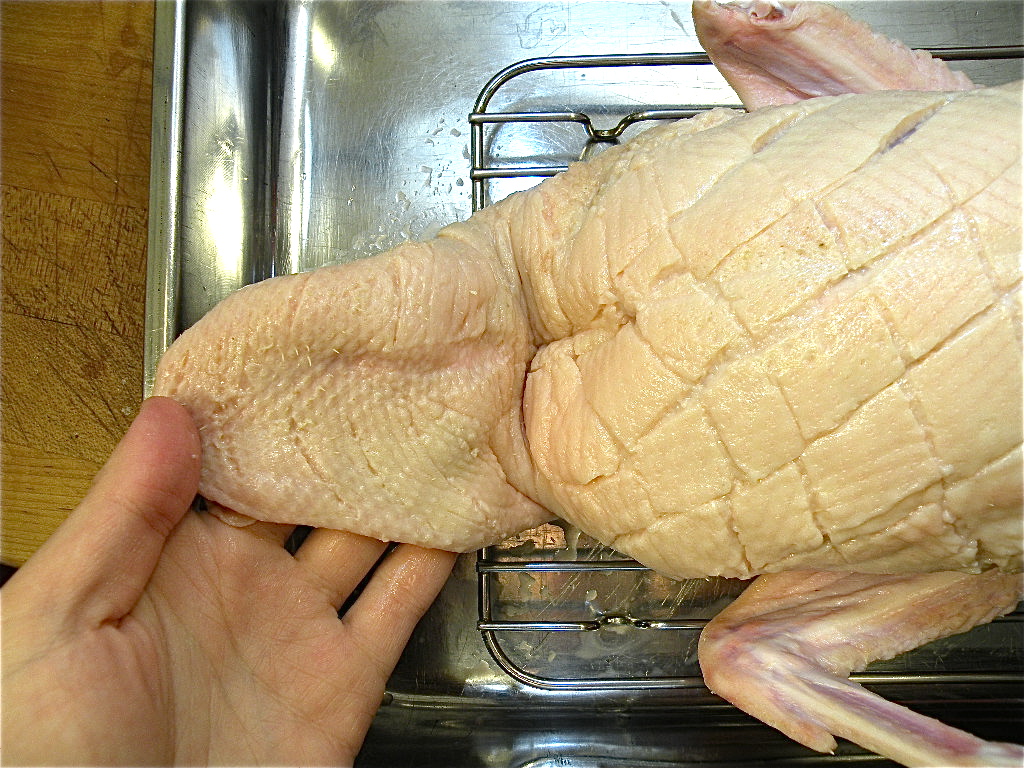
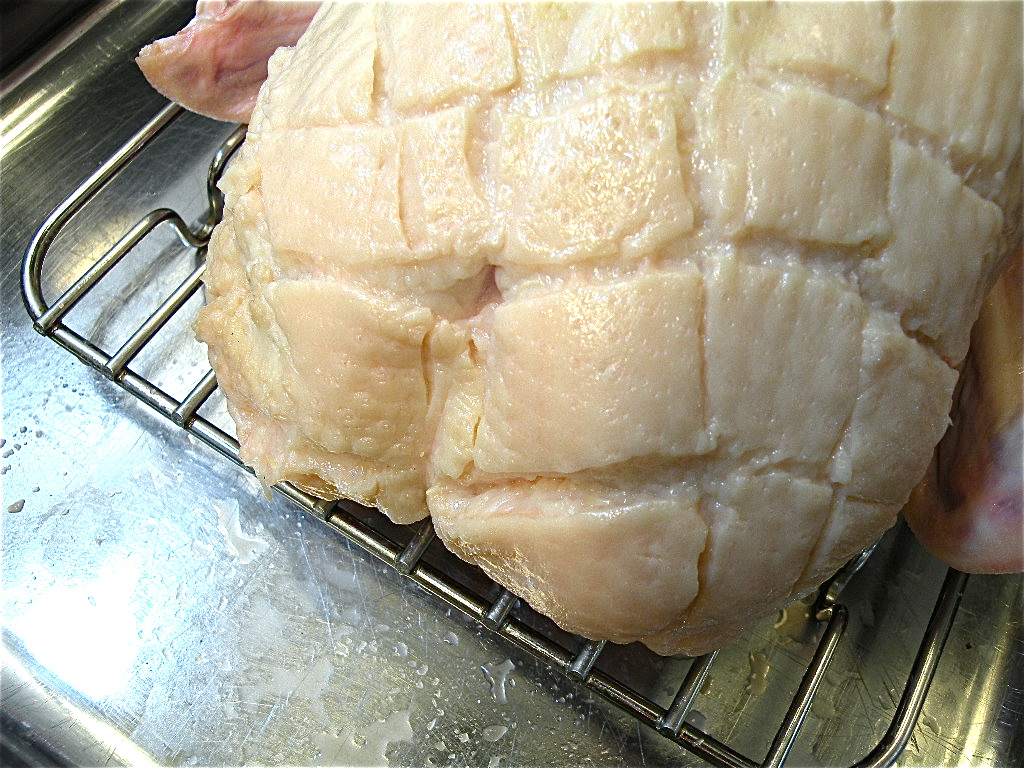
Now, you can toss that skin. But if you’re like me, and you want to get as much fat out of your duck as possible, save it.
Cut it into smaller pieces. Put it in a pot with a little water. Bring the water to a simmer. Cover the pot tightly and let it simmer for a while. The skin will let out most of its fat. Strain it into a jar and reserve.
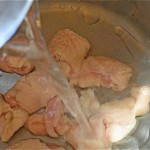
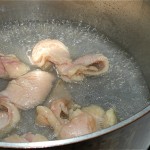
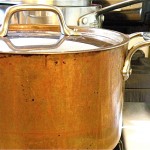
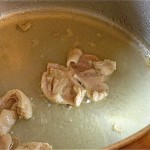
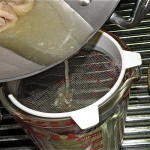
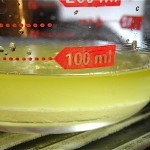
How to roast a duck: Poke the duck all over & truss it
Prick the duck’s skin all over with a sharp knife. This is to create small holes that’ll let the fat escape more readily. The more fat escapes, the crisper the skin will be. Only prick the skin, don’t hit the meat.
Cross the legs and tie them together like this with a piece of butcher’s twine.
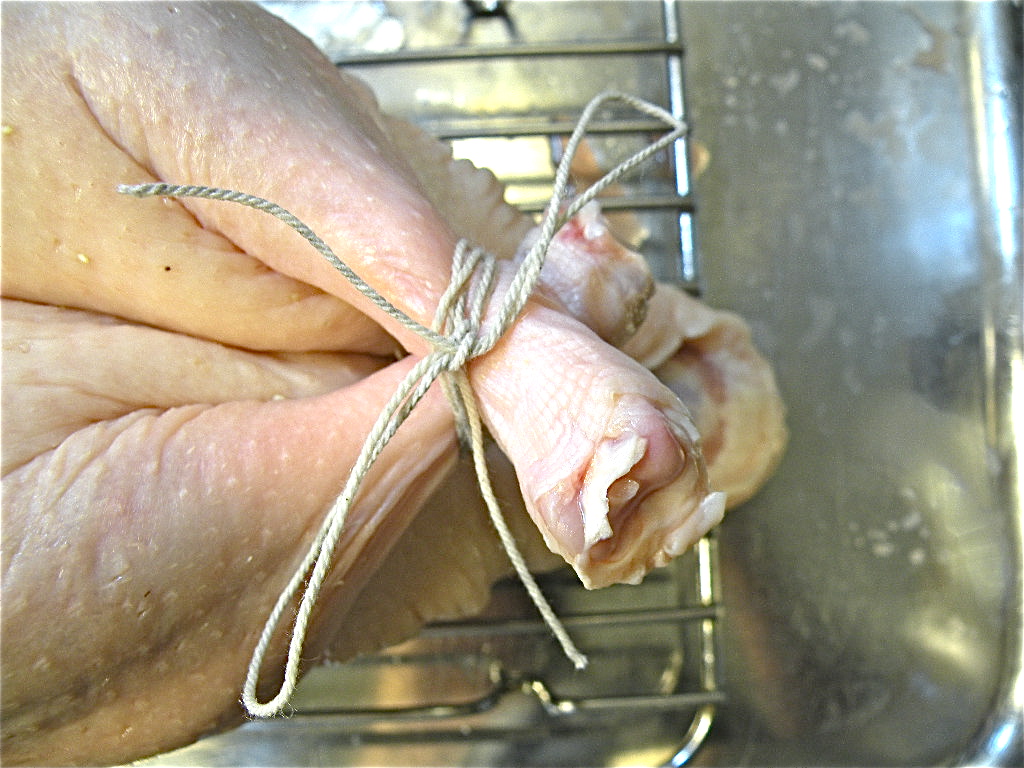
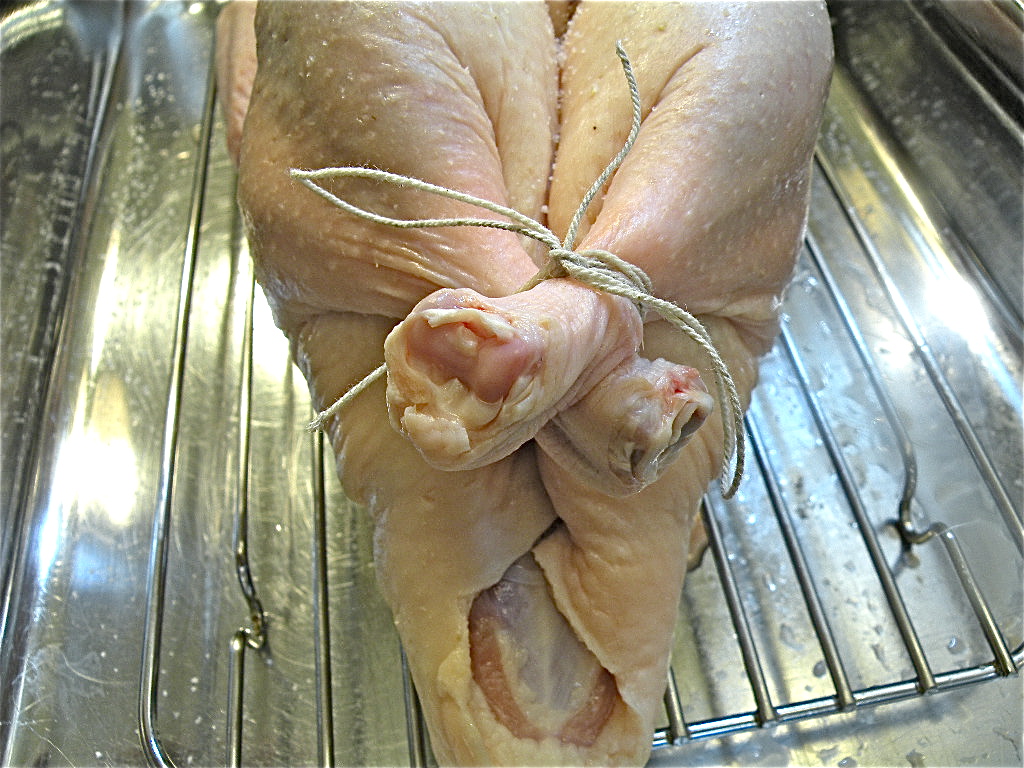
Fold the wings under the duck. (Please note, my duck here is missing one of his wing tips!)
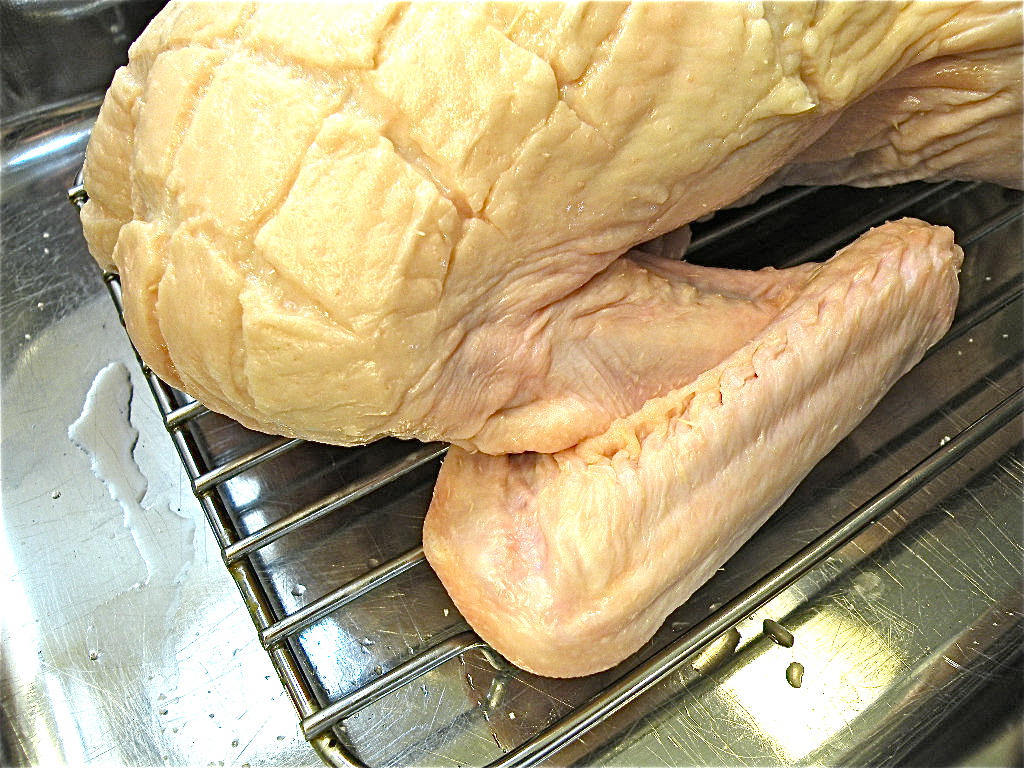
I didn’t get a good picture of the wing folding for the duck, but here are some pictures of how to fold a chicken wing, which is similar.
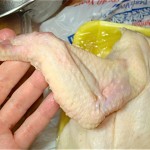
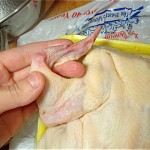
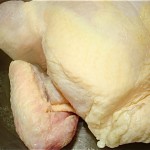
Sprinkle the duck with salt and pop it into the oven. Roast just like this, breast-side up, for 1 hour at 300 degrees.
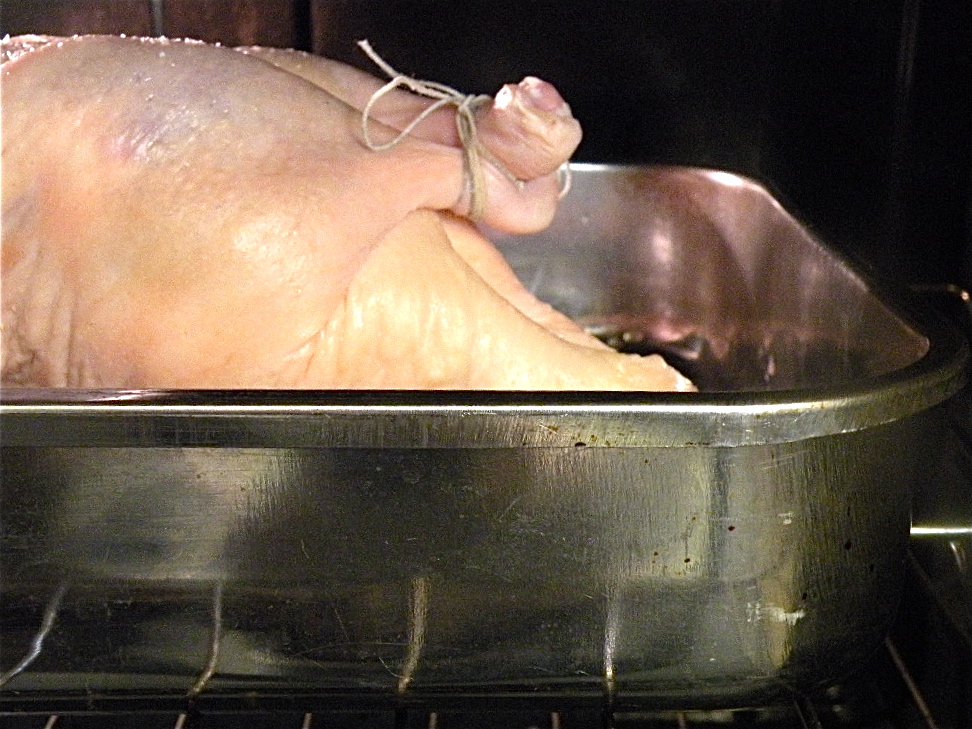
After the first hour: Poke and turn the bird breast-side down
After the first hour, yank the pan out of the oven. The skin will still be pale, and should be just a wee bit crisp when poked.
Prick the skin all over with a knife. When pierced, the skin should let out gloriously molten duck fat. Be sure to get the area around the legs, which is particularly fatty.
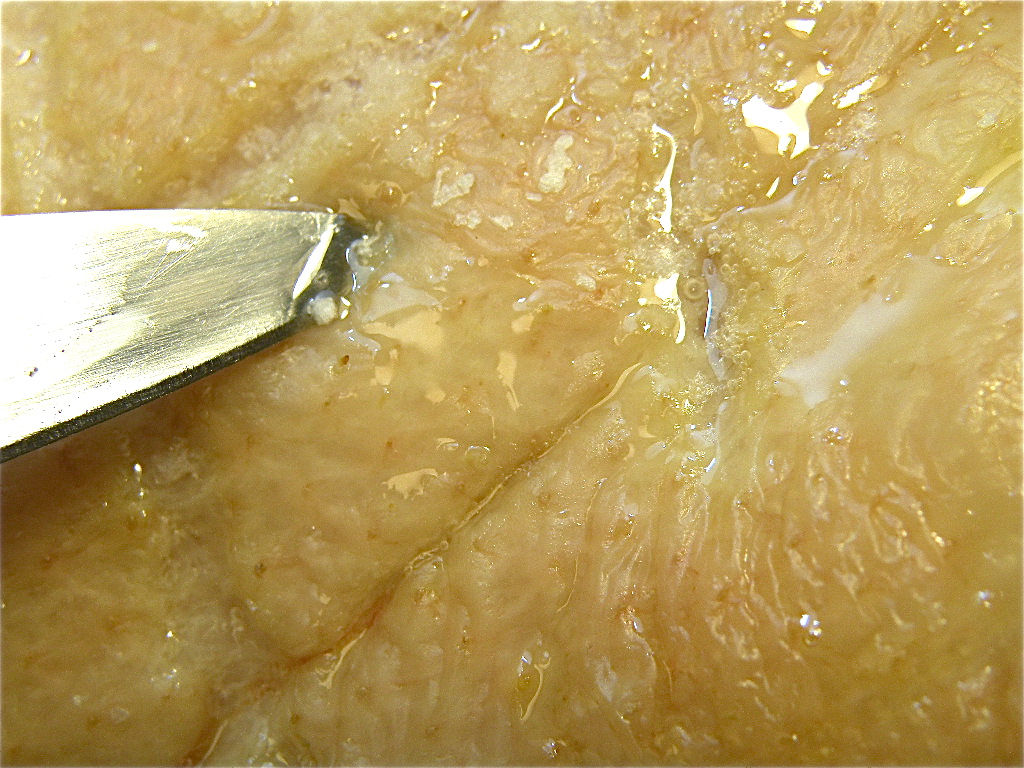
Flip the bird over, so it’s breast-side down.
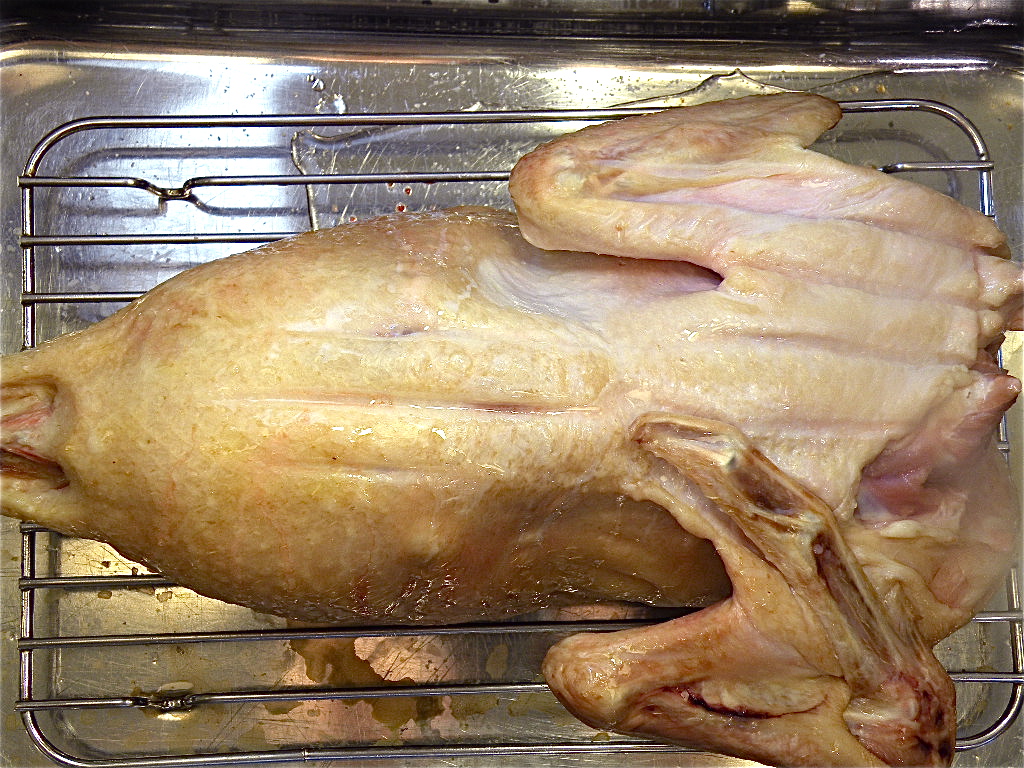
Pop it back into the oven. Roast breast-side down for 1 hour at 300 degrees.
After the second hour: Poke and turn the bird breast-side up
After the second hour, yank the pan out of the oven. The skin will be browner, and more crisp, like this:
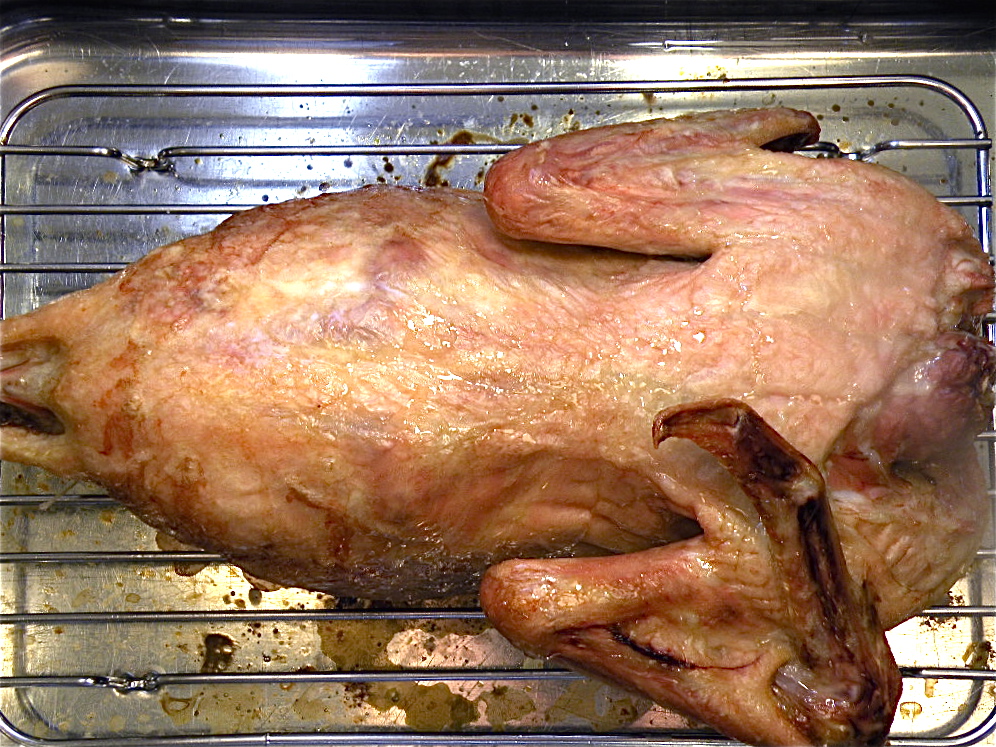
Prick the skin all over. Flip the bird breast-side up.
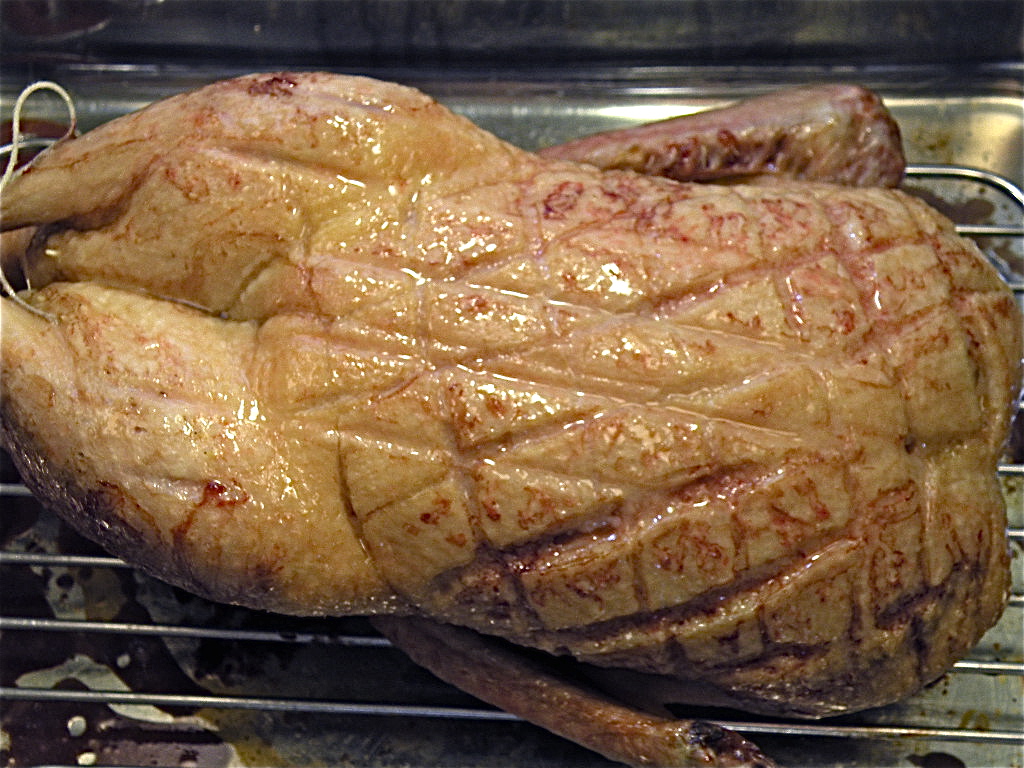
Pop it back in the oven. Roast breast-side up for 1 hour at 300 degrees.
After the third hour: Poke and turn the bird breast-side down
After the third hour, yank the pan out of the oven. Your duck should be noticeably browner and getting kind of crispy.
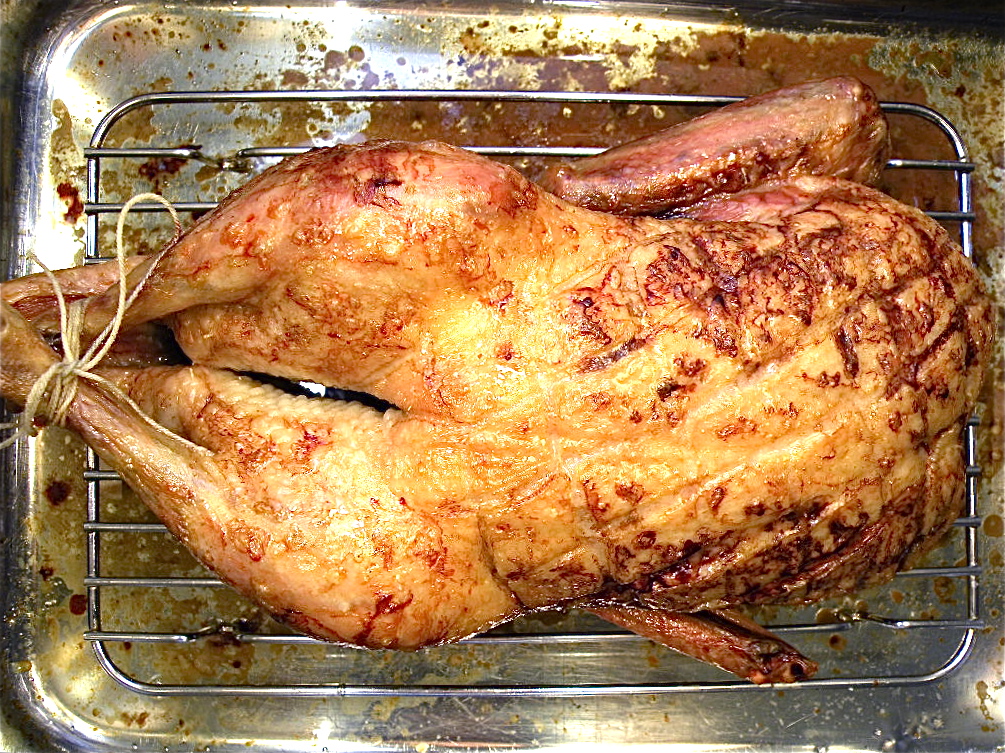
Prick the bird all over.
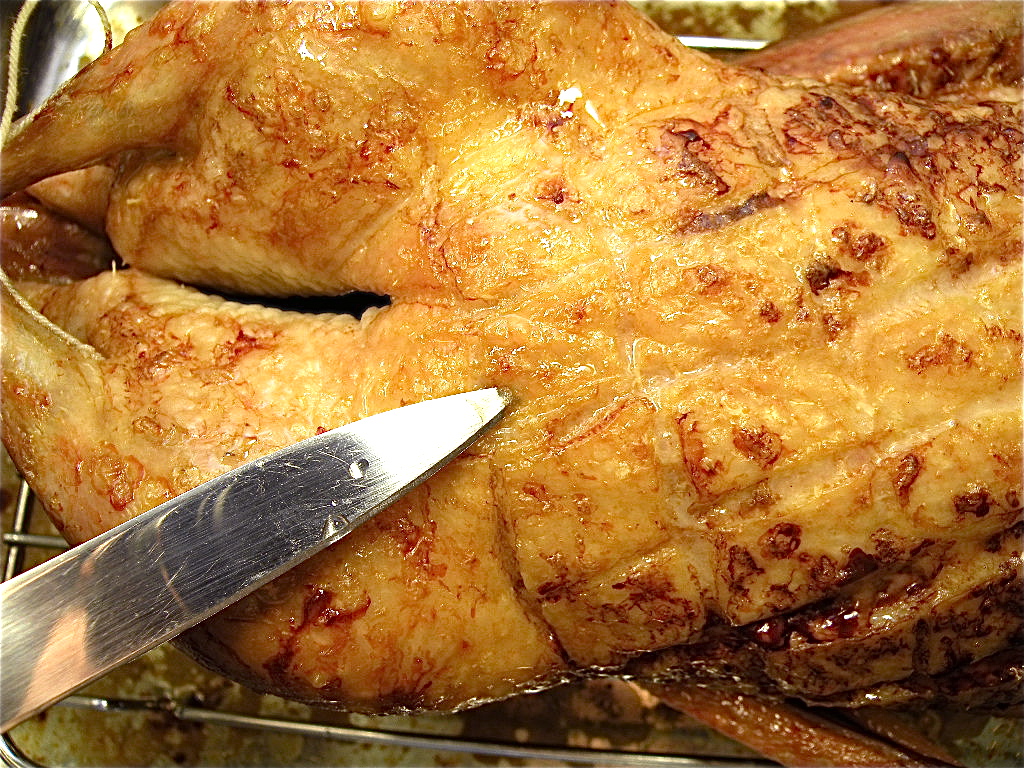
Flip it over so it’s breast-side down.
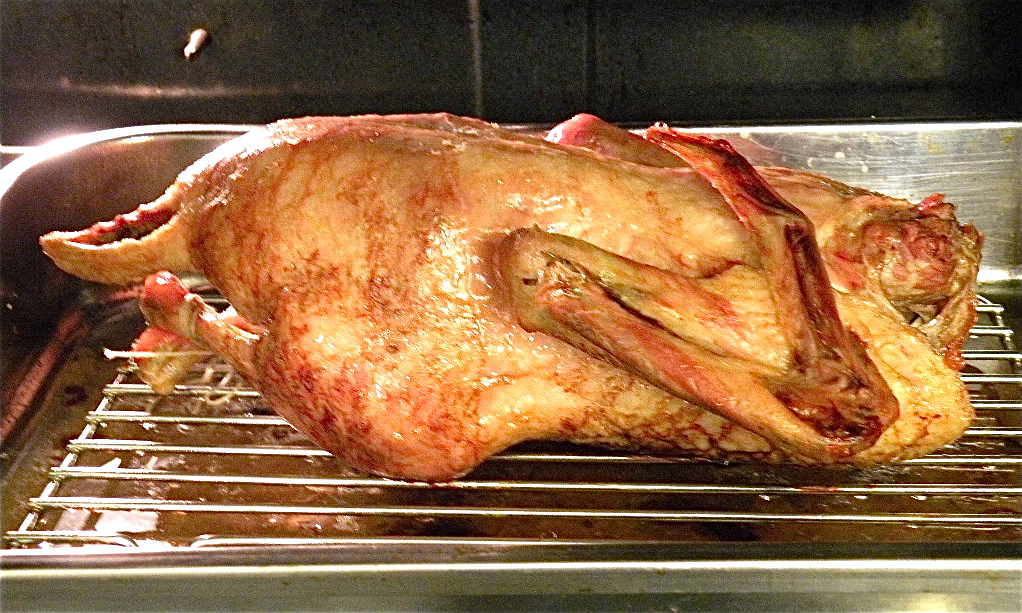
Pop it back in the oven. Roast breast-side down for a final hour at 300 degrees.
While the duck is roasting for its last hour, make the glaze
When the duck is roasting for its fourth hour, it’s time to make the glaze. In a medium-sized saucepan, combine the honey, molasses, orange juice, soy sauce, and hot sauce. Bring to a simmer.
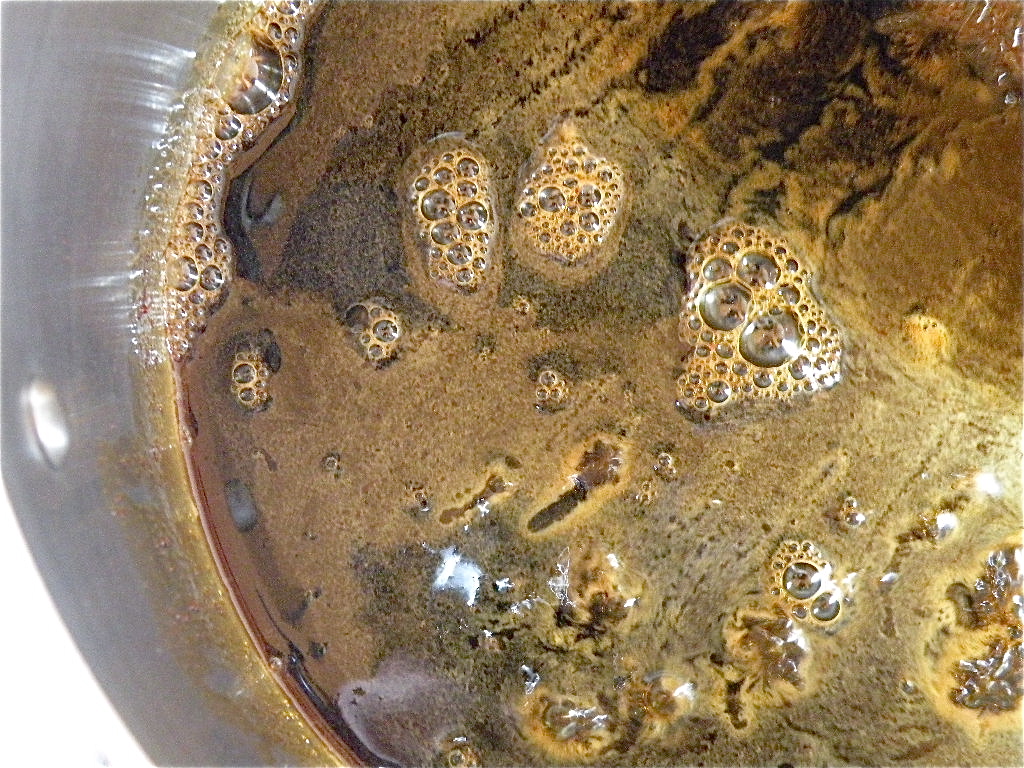
Whisk constantly over medium-high heat for a few minutes, ’til it gets thick and syrupy, like this.
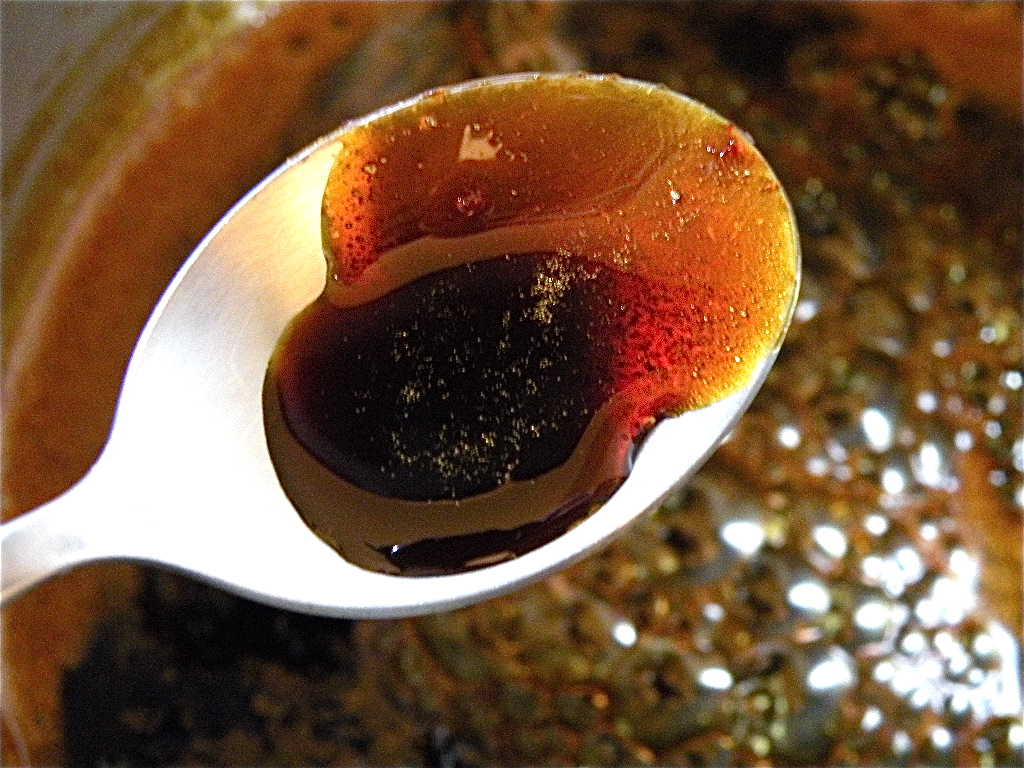
It should coat the back of a spoon fairly thickly.
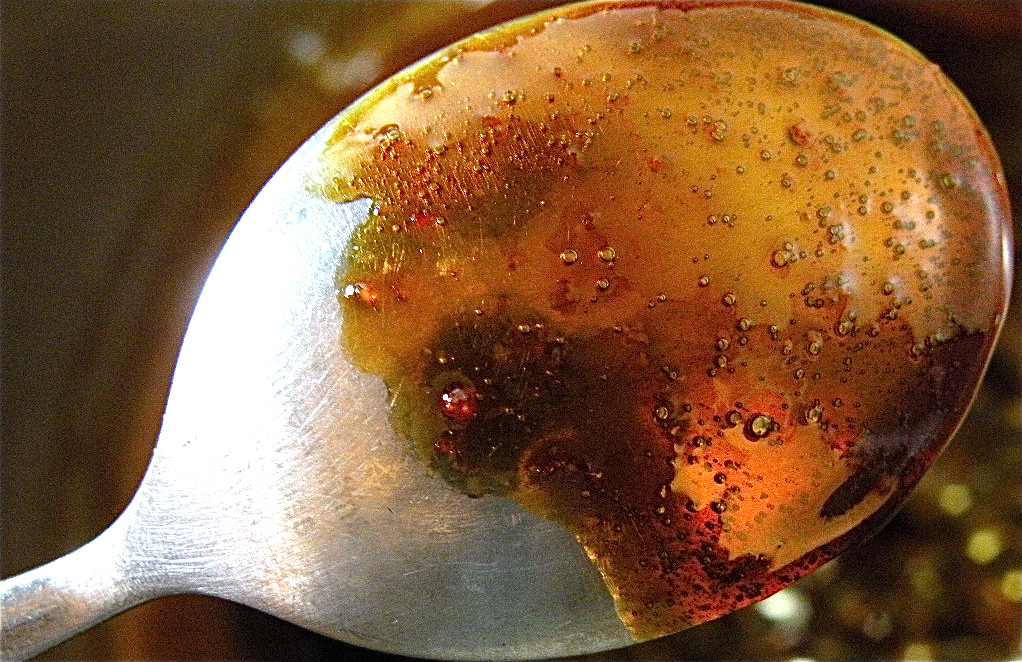
Set your glaze aside, off the heat, until your duck comes out of the oven.
After the fourth hour: Finish your duck!
Finally! After the 4th hour, yank the pan out of the oven. Crank the heat up to 400 degrees.
Your duck should look about like this:
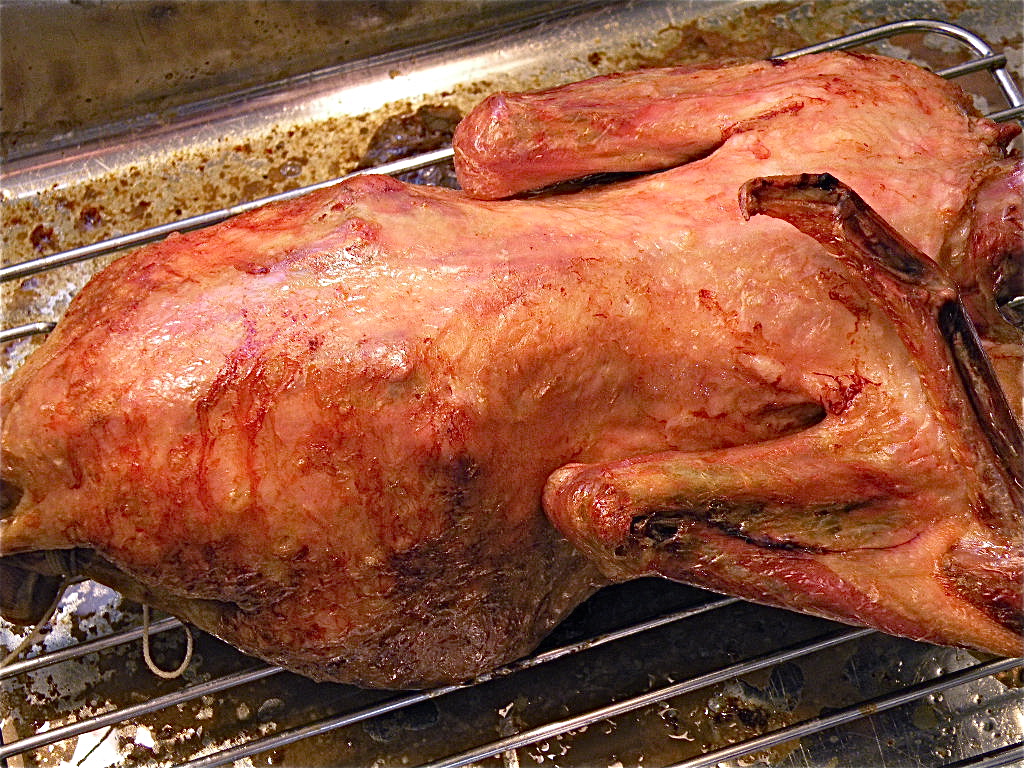
If you’re saving the duck fat for cooking later, remove it from the pan now. (Pull the duck and rack out carefully and pour off the duck fat….or tip the pan and remove it with a spoon. Be extra careful here, fat burns are nasty.) Do this now, before you add the glaze, so the glaze doesn’t get into the fat.
When you’re done, put the duck back in the pan on the rack. Flip it over, so it’s breast-side up.
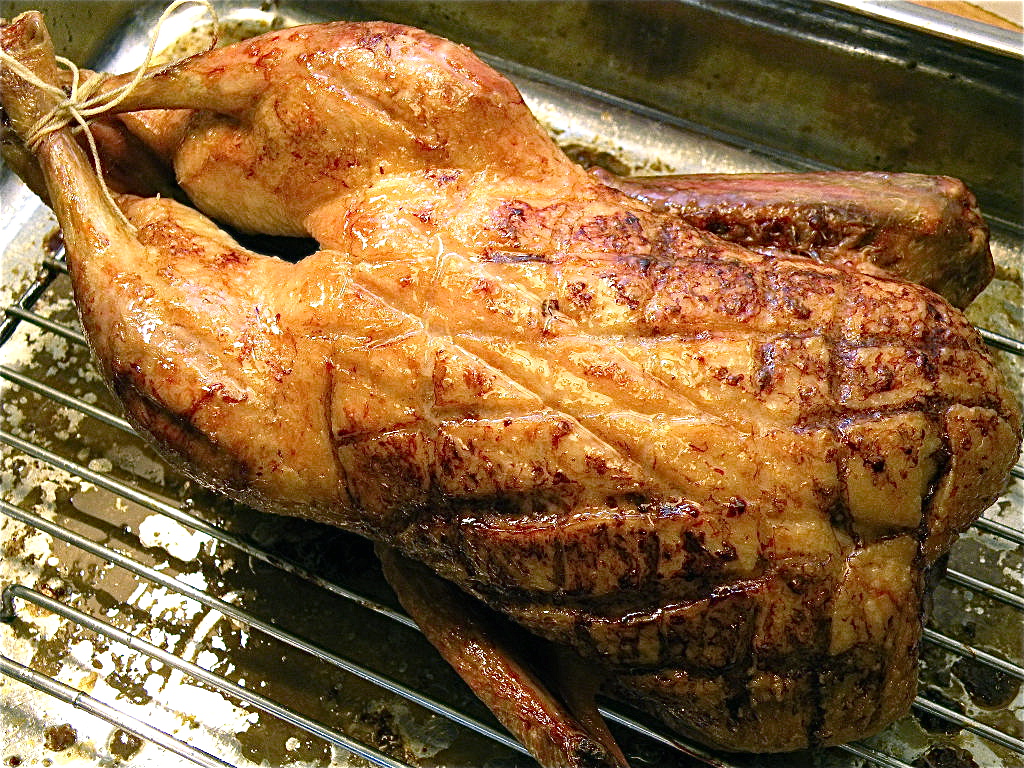
When your oven hits 400 degrees, stick the pan back into the oven. Roast like this, breast-side up, for 10 minutes or so. This is to help crisp up the skin a little more.
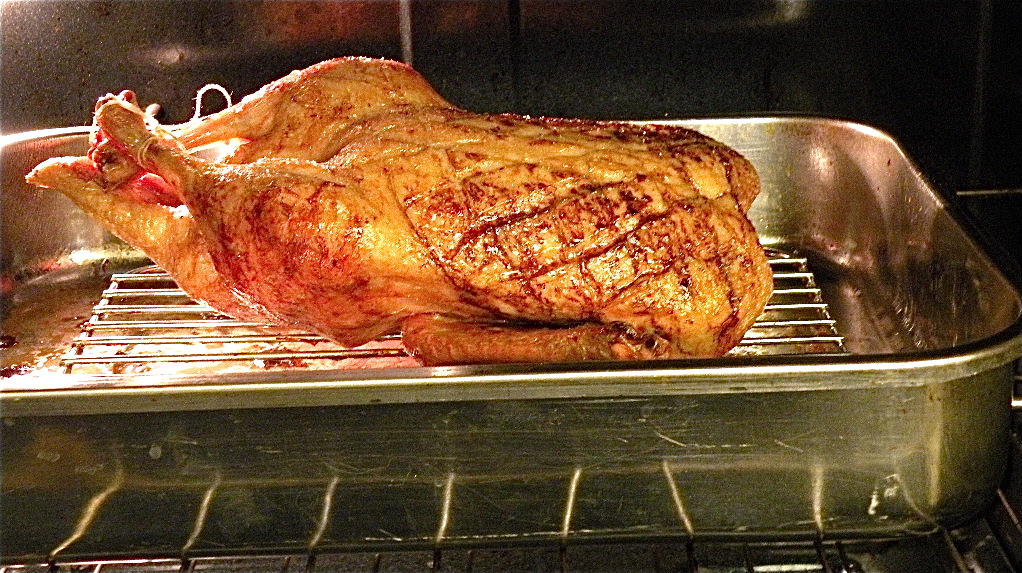
After 10 minutes, yank the pan out of the oven. The skin should be golden brown and crisp.
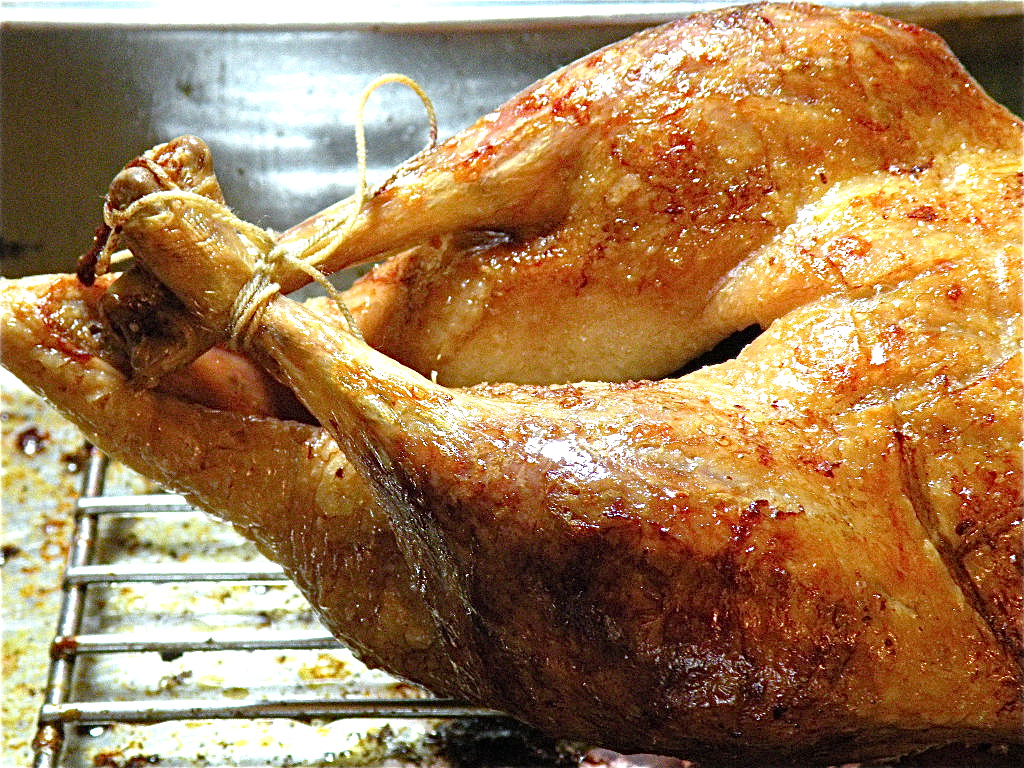
Brush the surface with glaze so that your duck is completely covered. (If your glaze has cooled and is too thick to spread, just warm it up on the stove and it’ll liquify right up.)
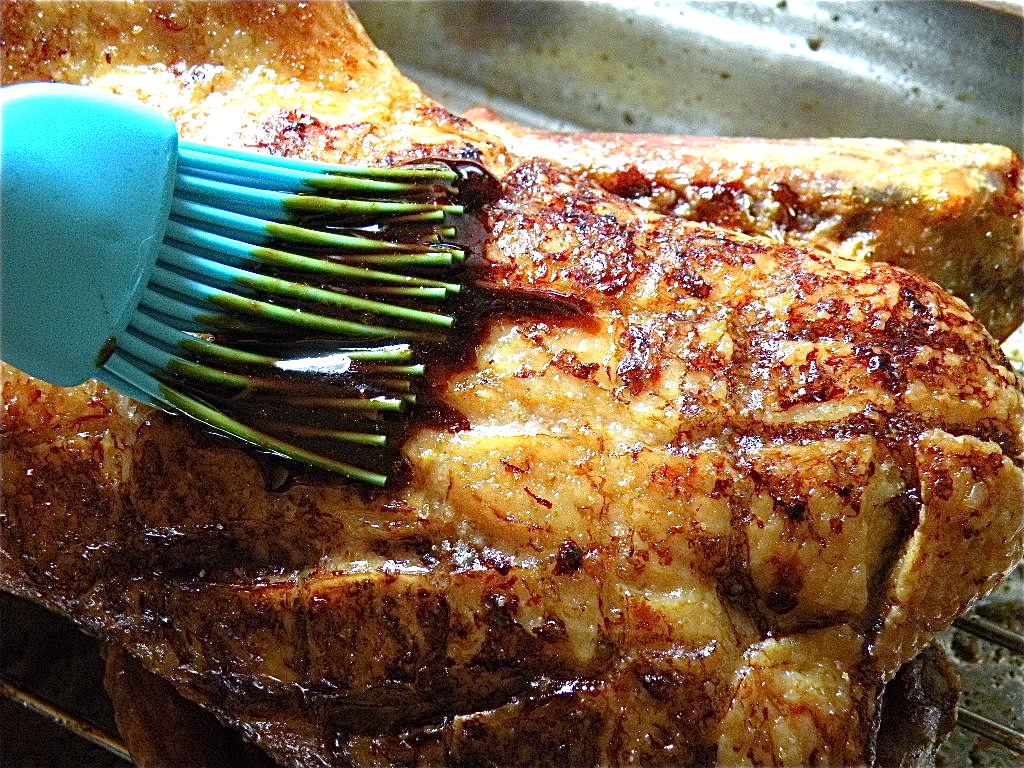
You want your duck to look about like this:
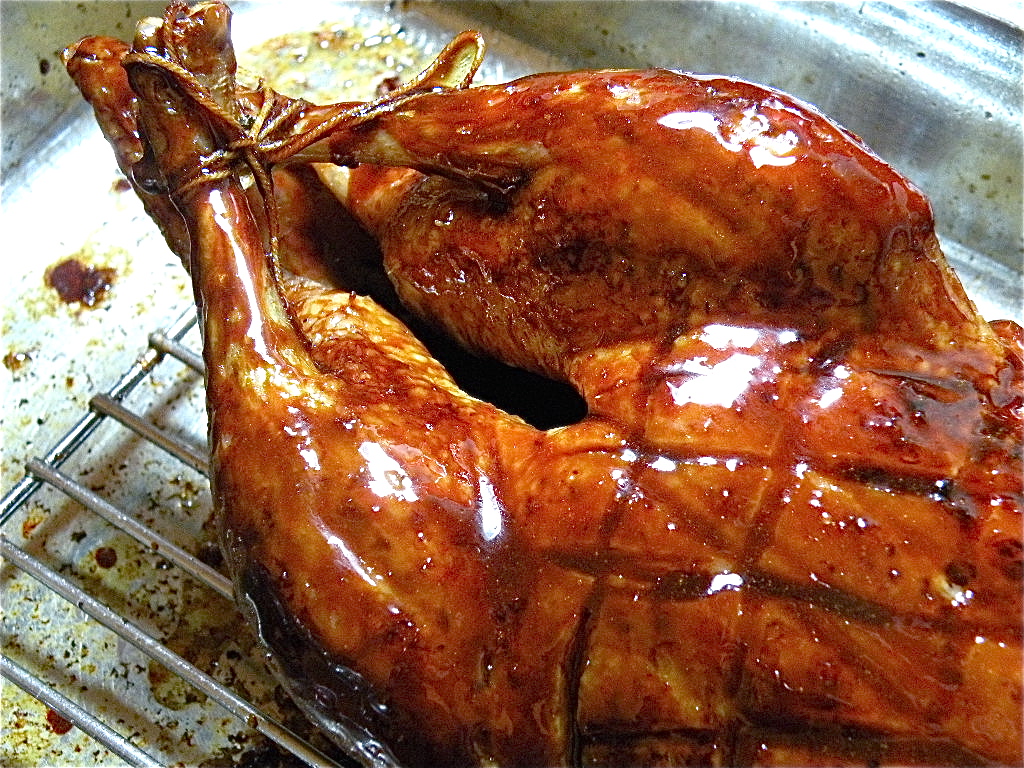
Stick your pan back in the oven, and roast at 400 degrees for 5-7 minutes, until your duck is a beautiful mahogany color. Keep a close eye on it, and yank it out if it starts to burn.
Your finished duck should look about like this:
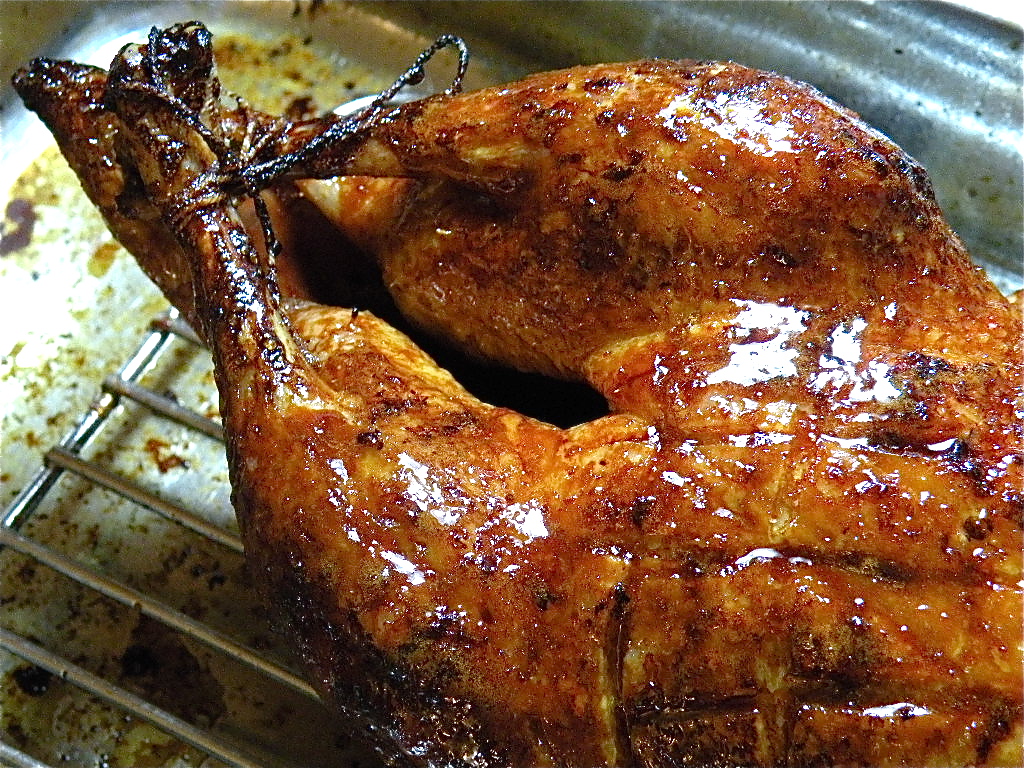
Let the duck rest for 10 minutes.
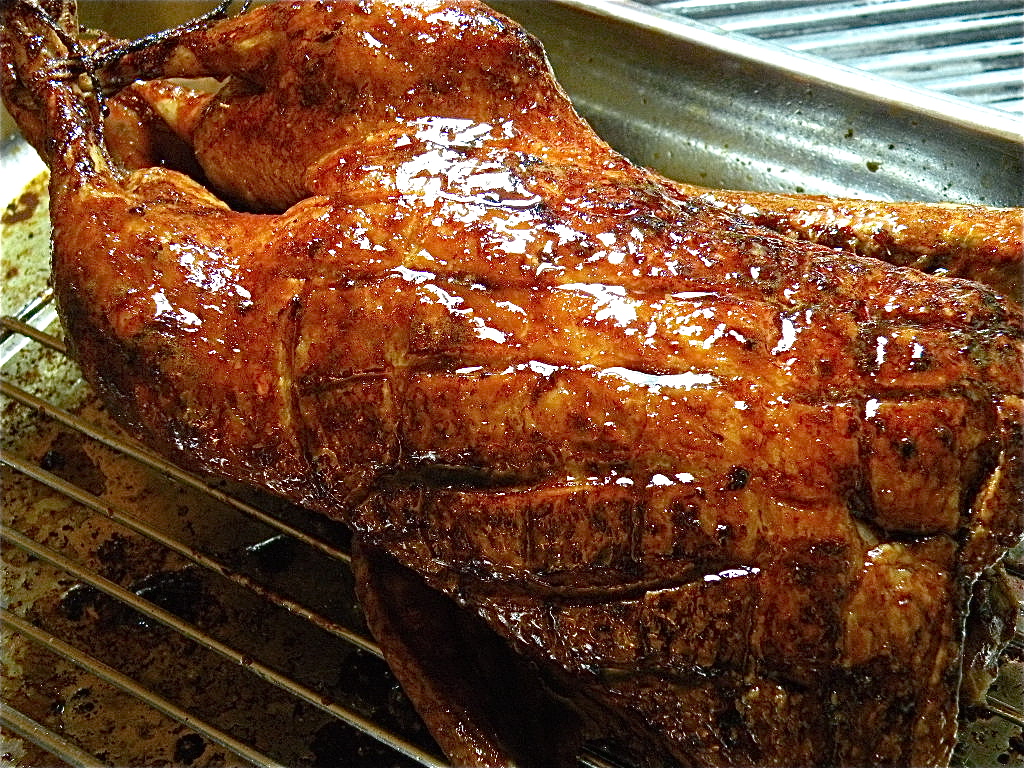
How to roast a duck: Carve, serve, and enjoy!
Transfer your duck to a platter. Carve just like you would a roasted chicken.
So, you wanna buy a duck? (Sorry, couldn’t resist.)
Oh, oh, oh!
Via: thehungrymouse

 Saturday, October 20, 2012
Saturday, October 20, 2012
 The Serene - ER
The Serene - ER

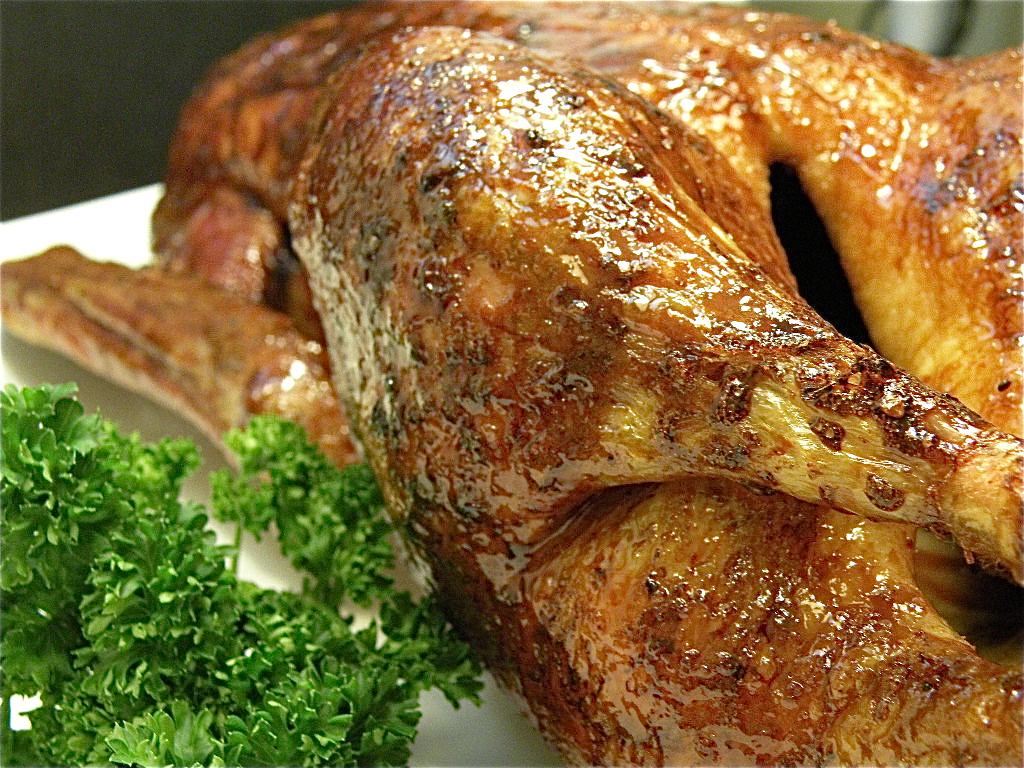
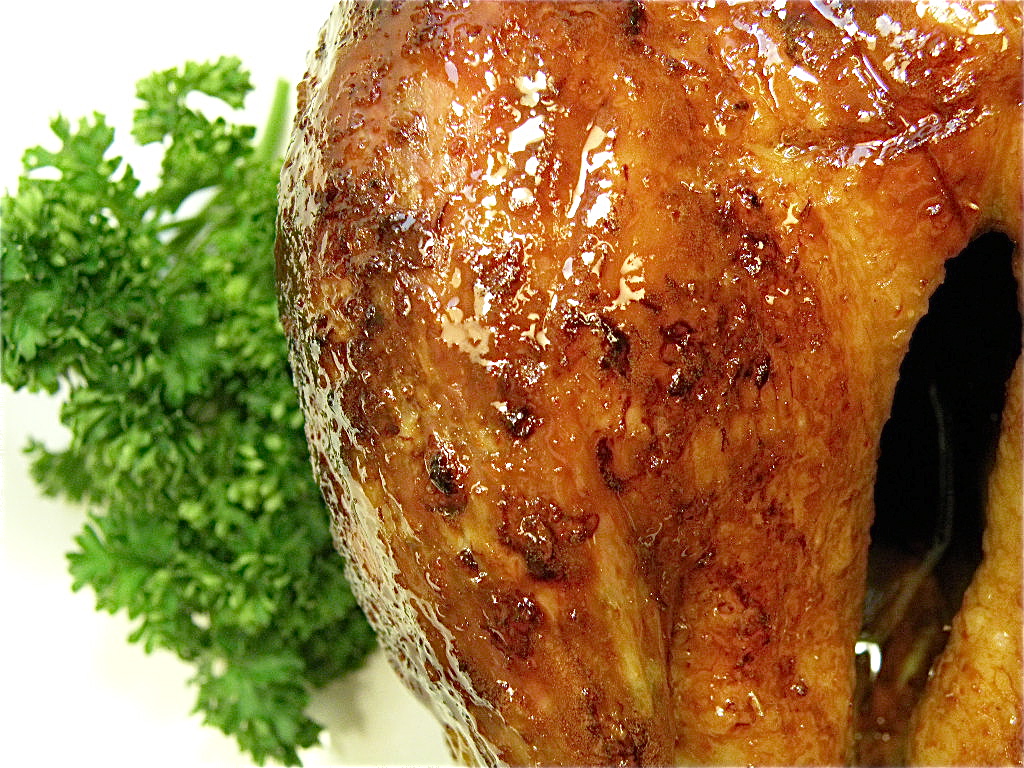
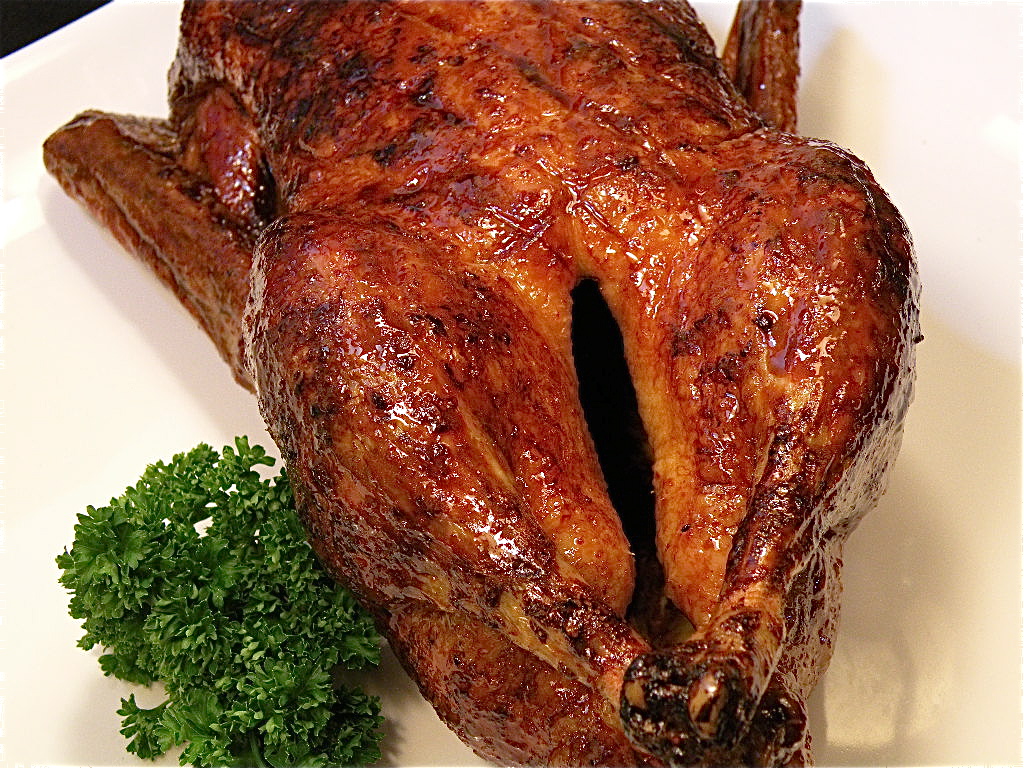
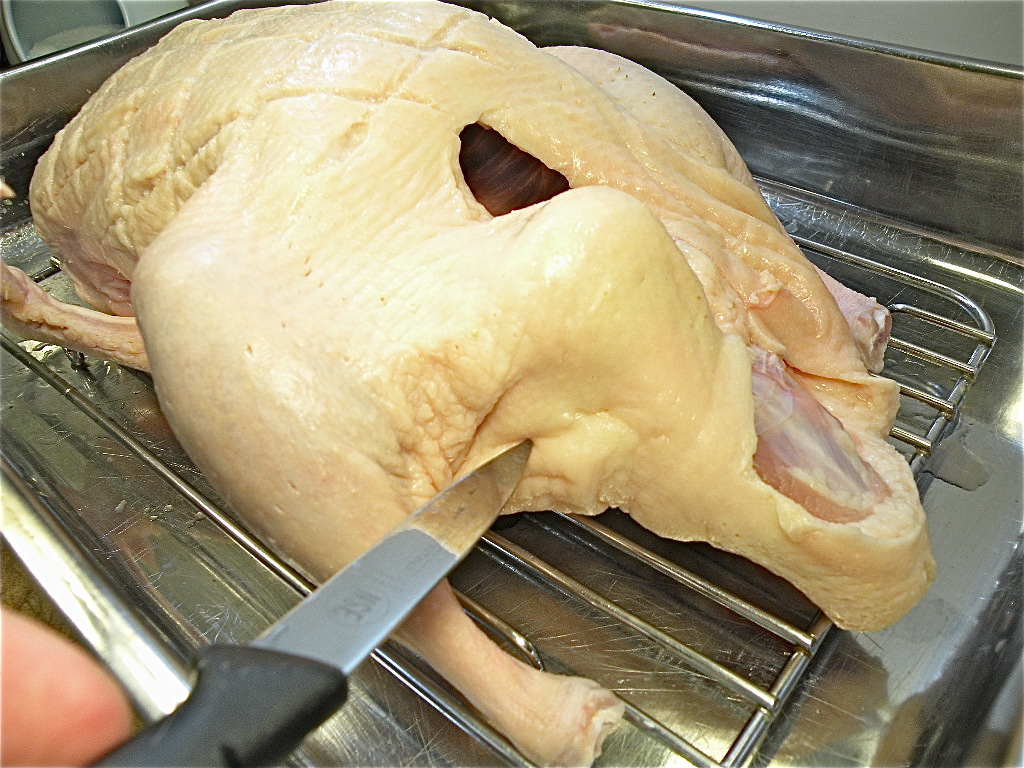
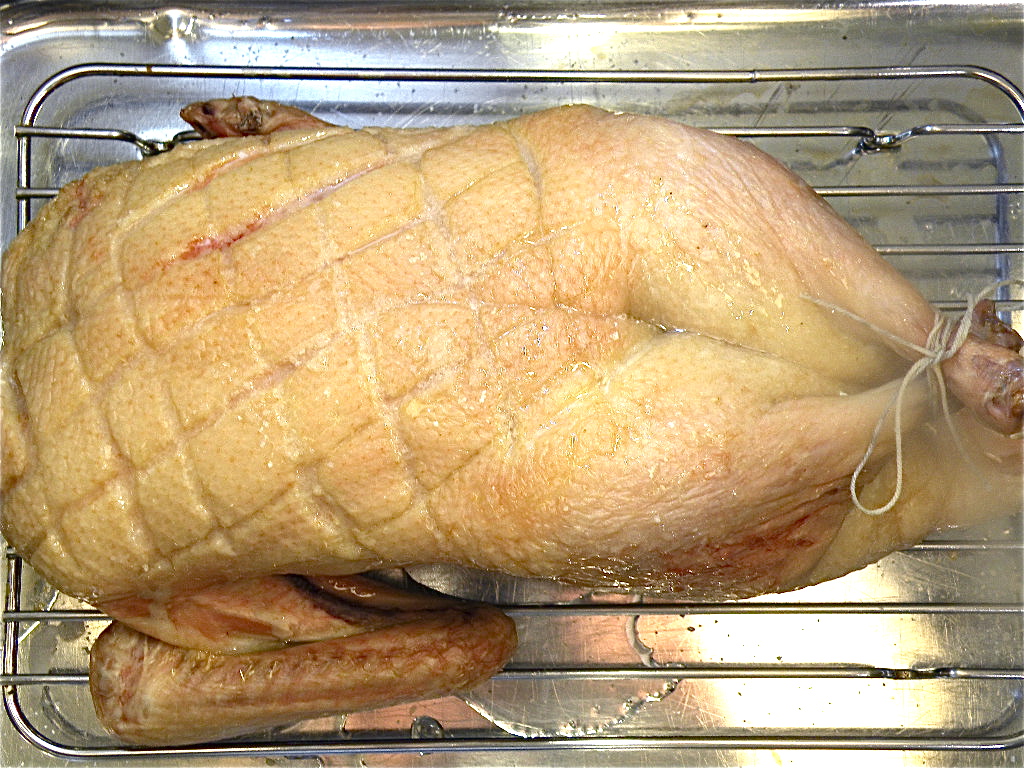
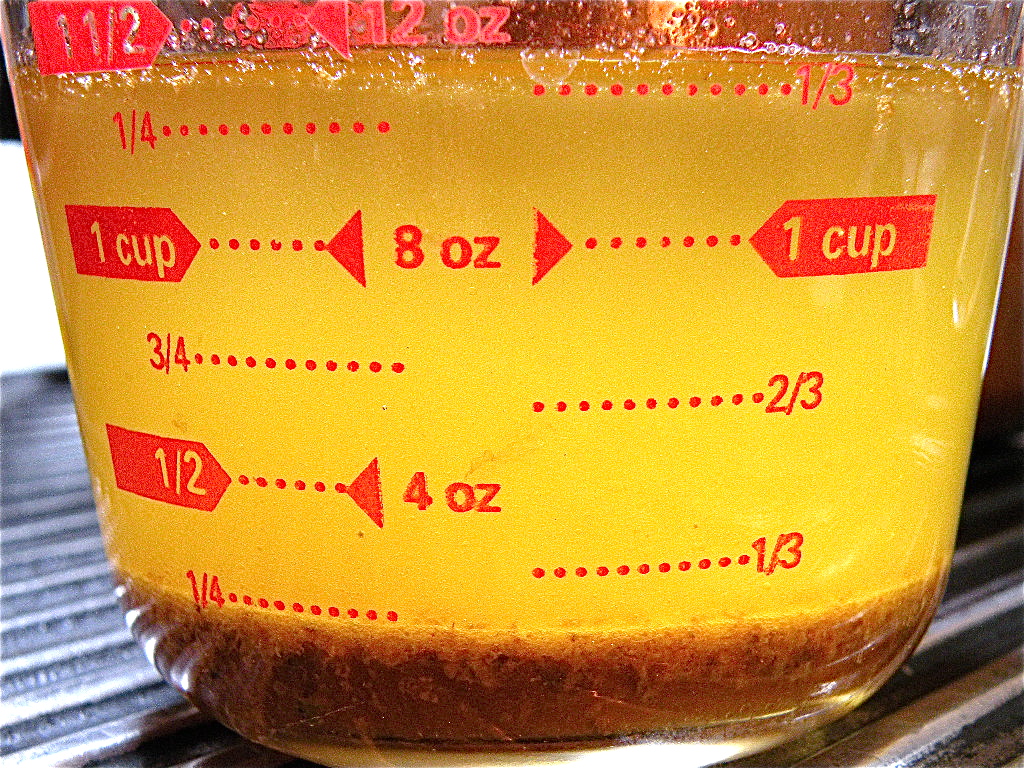
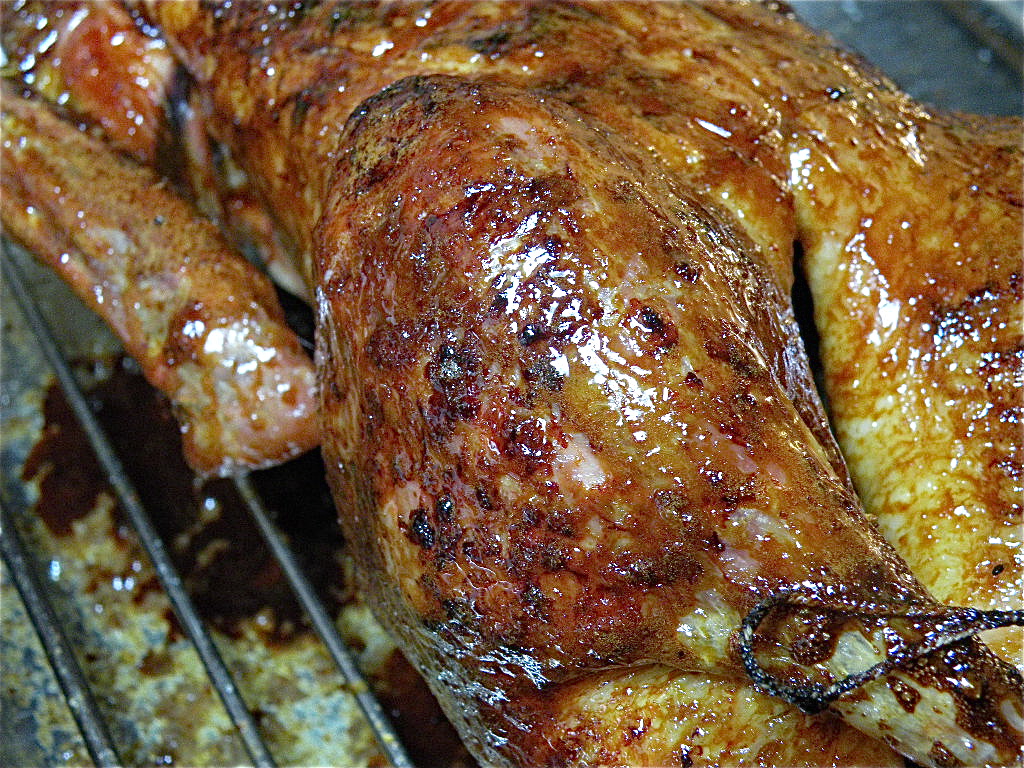
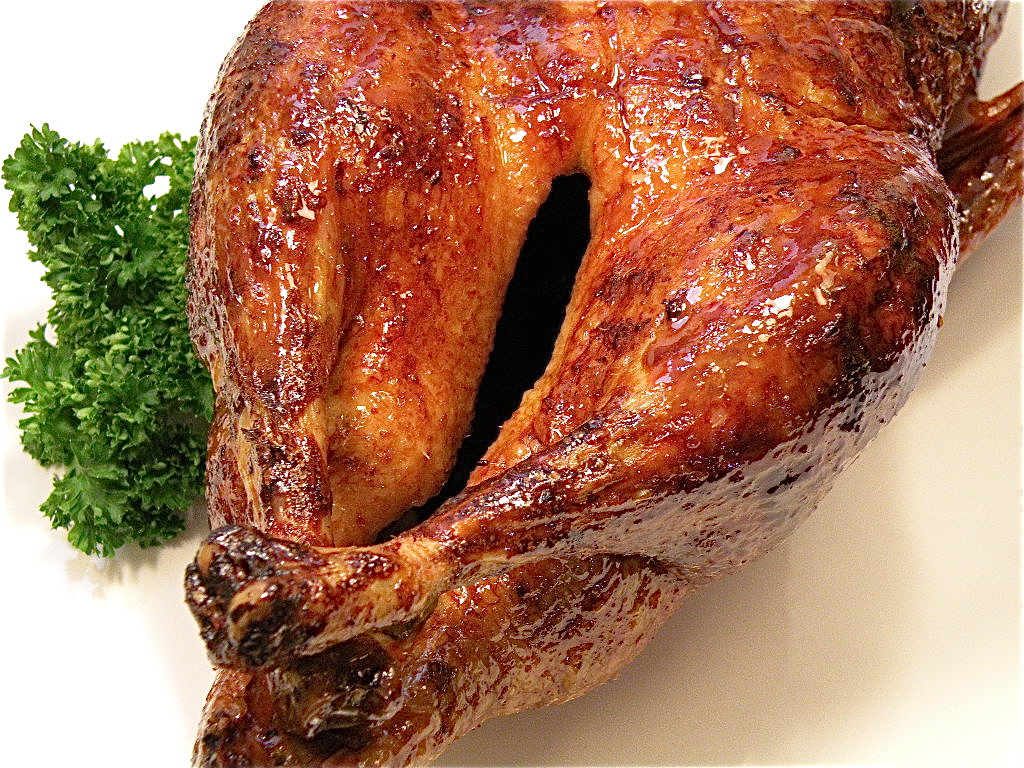
 Posted in:
Posted in:
0 comments:
Post a Comment